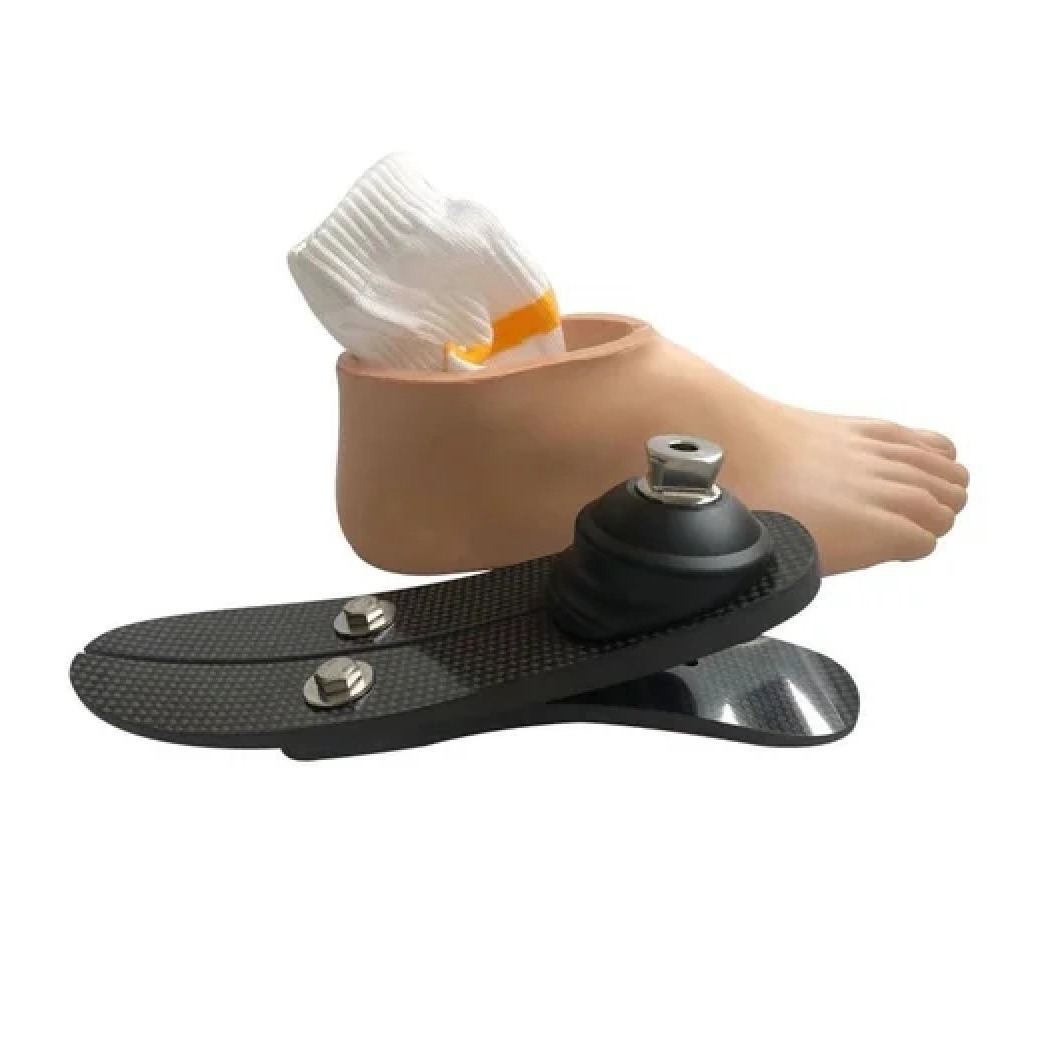+919377466476

This is your website preview.
Currently it only shows your basic business info. Start adding relevant business details such as description, images and products or services to gain your customers attention by using Boost 360 android app / iOS App / web portal.
A carbon fiber prosthetic foot is a type of art...

A carbon fiber prosthetic foot is a type of artificial limb designed to replace the function of a missing foot, using carbon fiber as the primary material due to its strength, lightweight nature, and flexibility. Here's an overview of its key features and benefits: Key Features: Material: Carbon Fiber: The primary material is carbon fiber, which is known for its high strength-to-weight ratio, durability, and flexibility. It provides excellent energy return, which is essential for mobility and active lifestyles. Design: Blade Shape: Many carbon fiber prosthetic feet have a blade-like shape, especially those designed for high-performance activities like running. This shape mimics the natural motion of the foot and ankle. Modular Components: These prosthetics often come with interchangeable components to customize the fit and function for the user’s needs, whether for everyday use, sports, or other activities. Functionality: Energy Storage and Return: The carbon fiber acts like a spring, absorbing energy when the foot strikes the ground and releasing it during push-off. This mimics the natural movement of the foot and ankle, providing a more natural gait. Lightweight: Carbon fiber is much lighter than traditional prosthetic materials, reducing the overall weight of the prosthetic and making it easier to move. Benefits: Improved Mobility: Users often experience enhanced mobility and ease of movement due to the lightweight and flexible nature of carbon fiber, which can significantly improve the quality of life. Energy Efficiency: The energy return feature of carbon fiber prosthetic feet reduces the effort needed for walking and running, allowing users to move more efficiently and with less fatigue. Versatility: These prosthetic feet are suitable for a wide range of activities, from everyday walking to high-impact sports, making them versatile for different lifestyles. Durability: Carbon fiber is highly durable and resistant to wear and tear, making these prosthetic feet long-lasting even under strenuous conditions. Customization: The modular design allows for adjustments and replacements of specific components, providing a tailored fit and functionality for each user’s specific needs and preferences. Applications: Everyday Use: For regular daily activities, carbon fiber prosthetic feet provide a natural and comfortable gait, enhancing overall mobility and comfort. Sports and High-Performance Activities: Athletes and active individuals benefit greatly from the high energy return and durability, making these prosthetics ideal for running, jumping, and other dynamic movements. Considerations Cost: Carbon fiber prosthetic feet can be more expensive than those made from other materials due to the advanced technology and materials used. Adjustment Period: Users might need a period of adjustment to get used to the feel and performance of the carbon fiber prosthetic, particularly if switching from a different type of prosthetic foot. Maintenance: While durable, these prosthetics may still require regular maintenance and occasional component replacements to ensure optimal performance and longevity. Conclusion Carbon fiber prosthetic feet represent a significant advancement in prosthetic technology, offering enhanced mobility, efficiency, and comfort. They are particularly beneficial for active users, including athletes, due to their high energy return and lightweight nature. Despite the higher cost, their durability and performance make them a valuable investment for many users.

